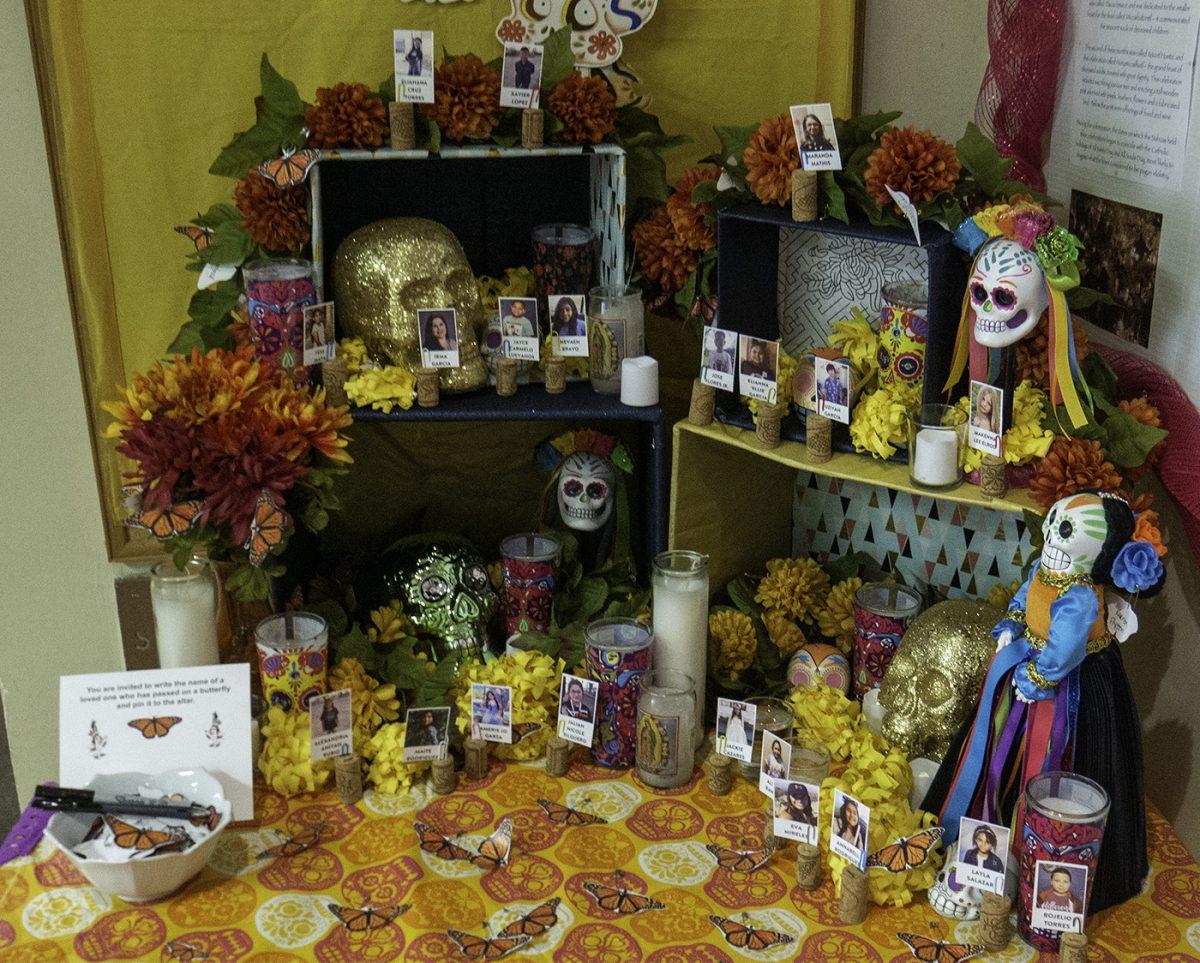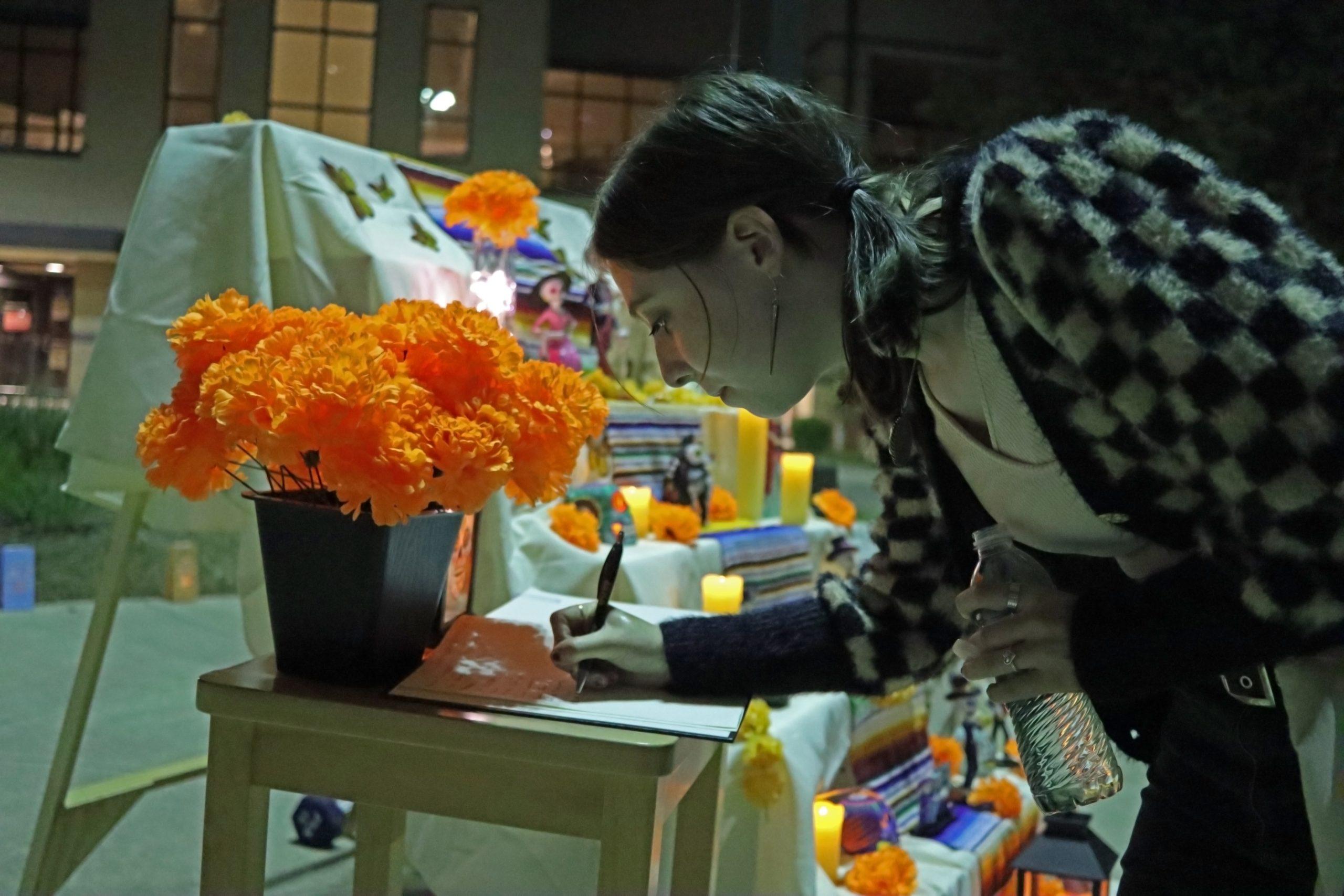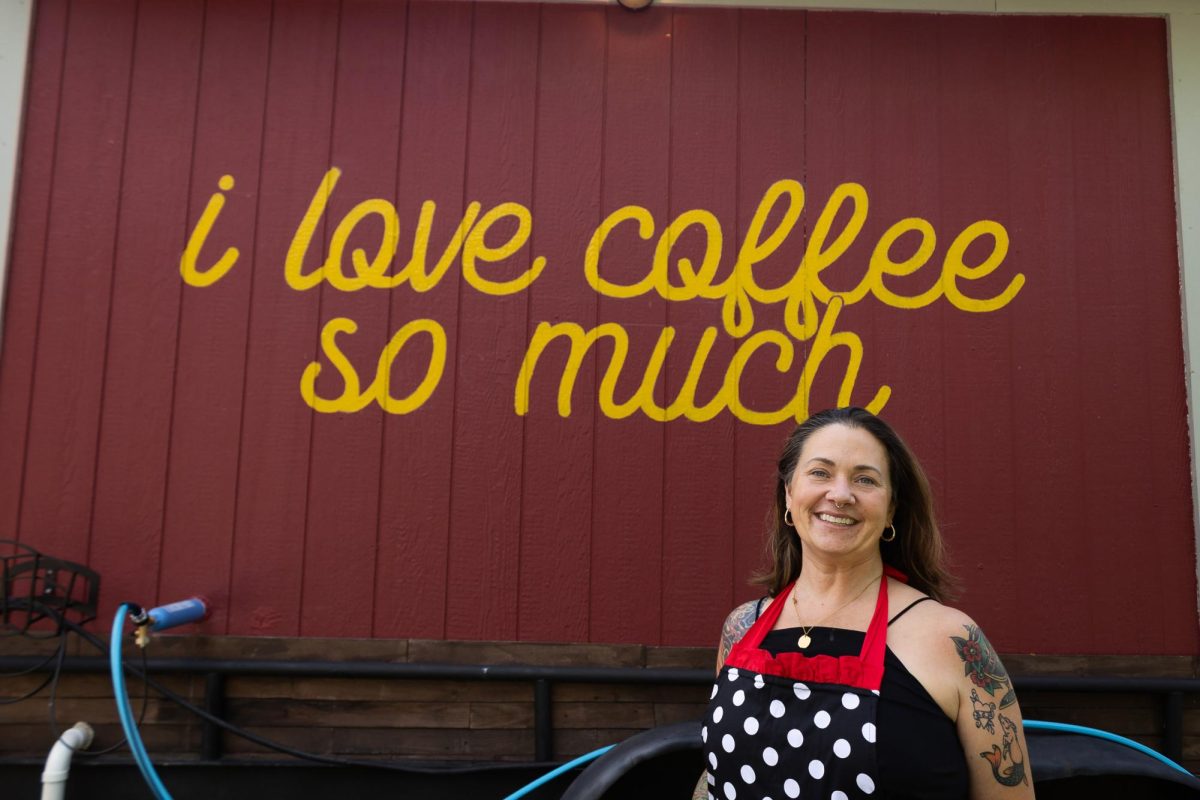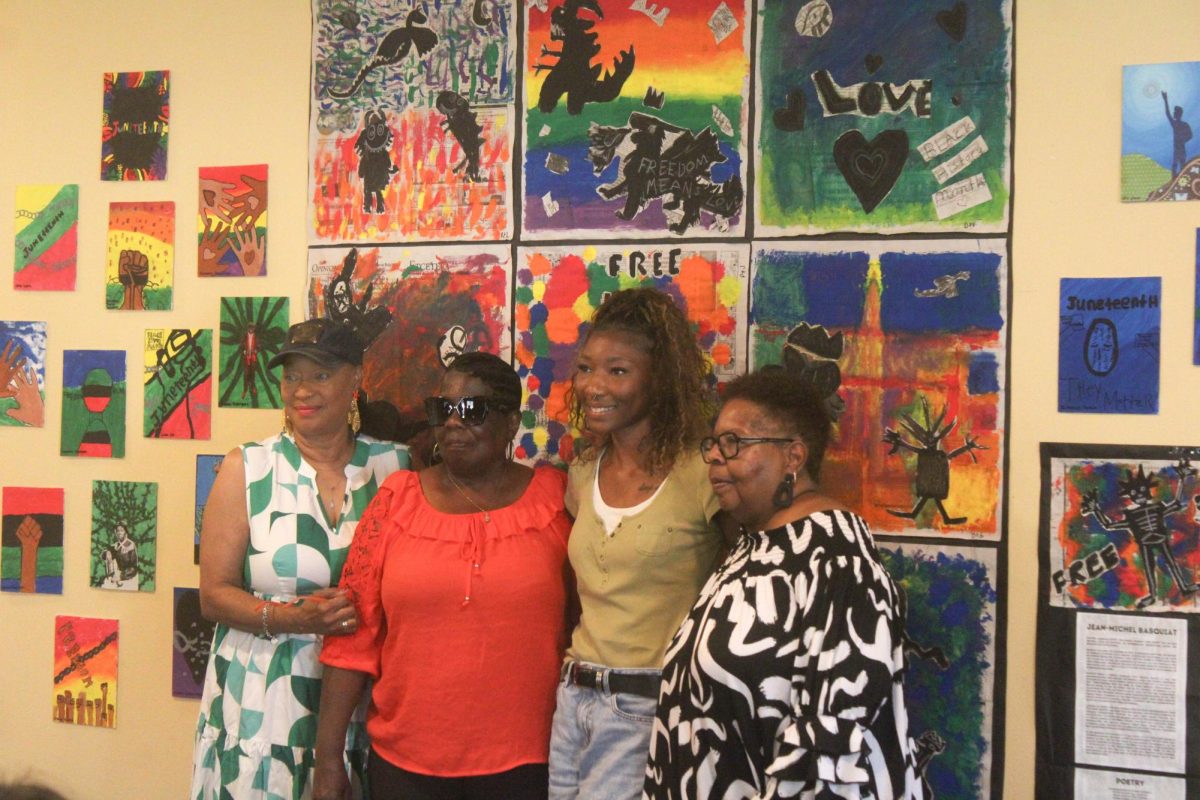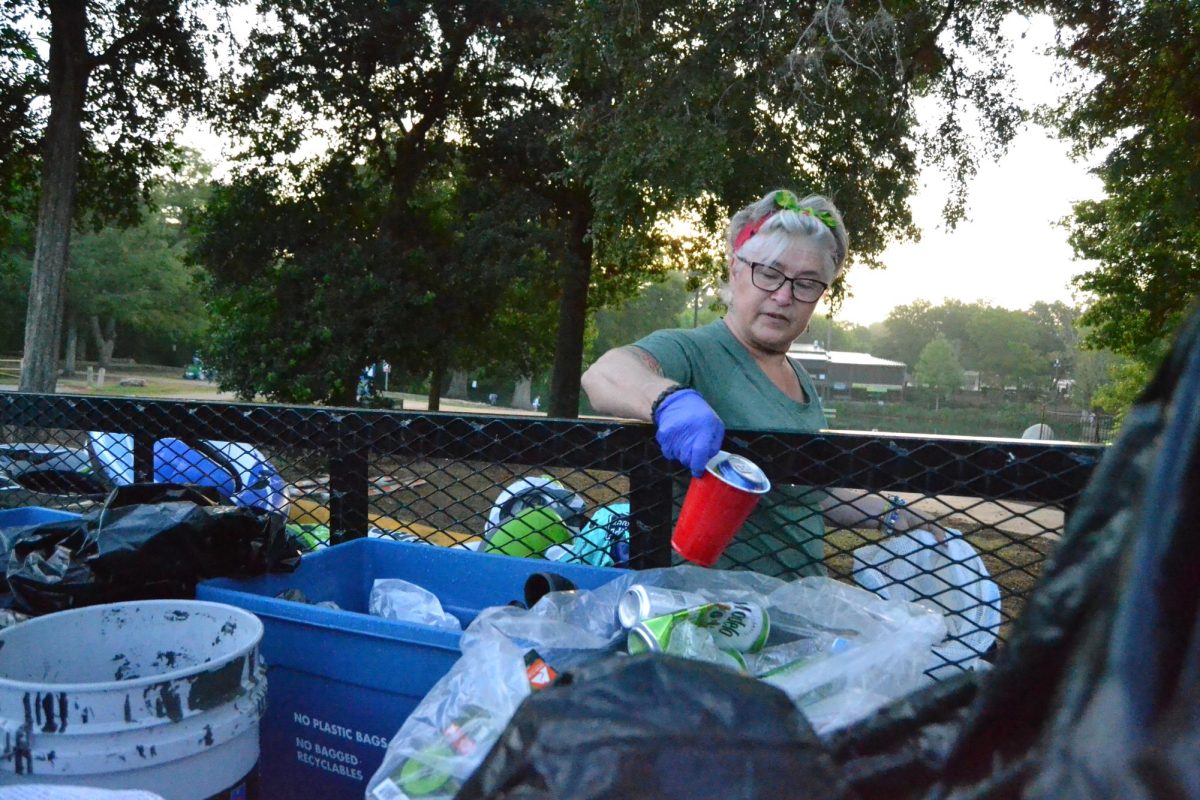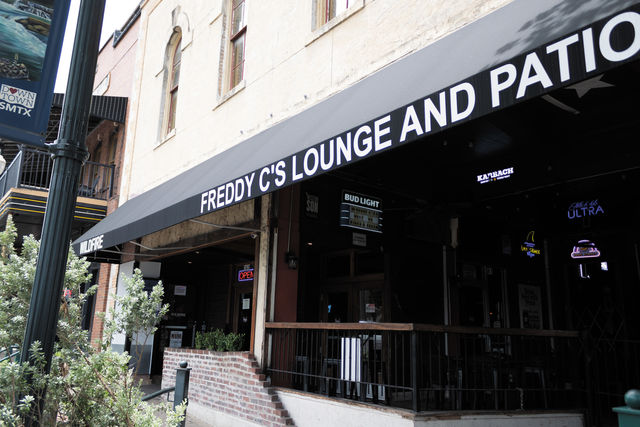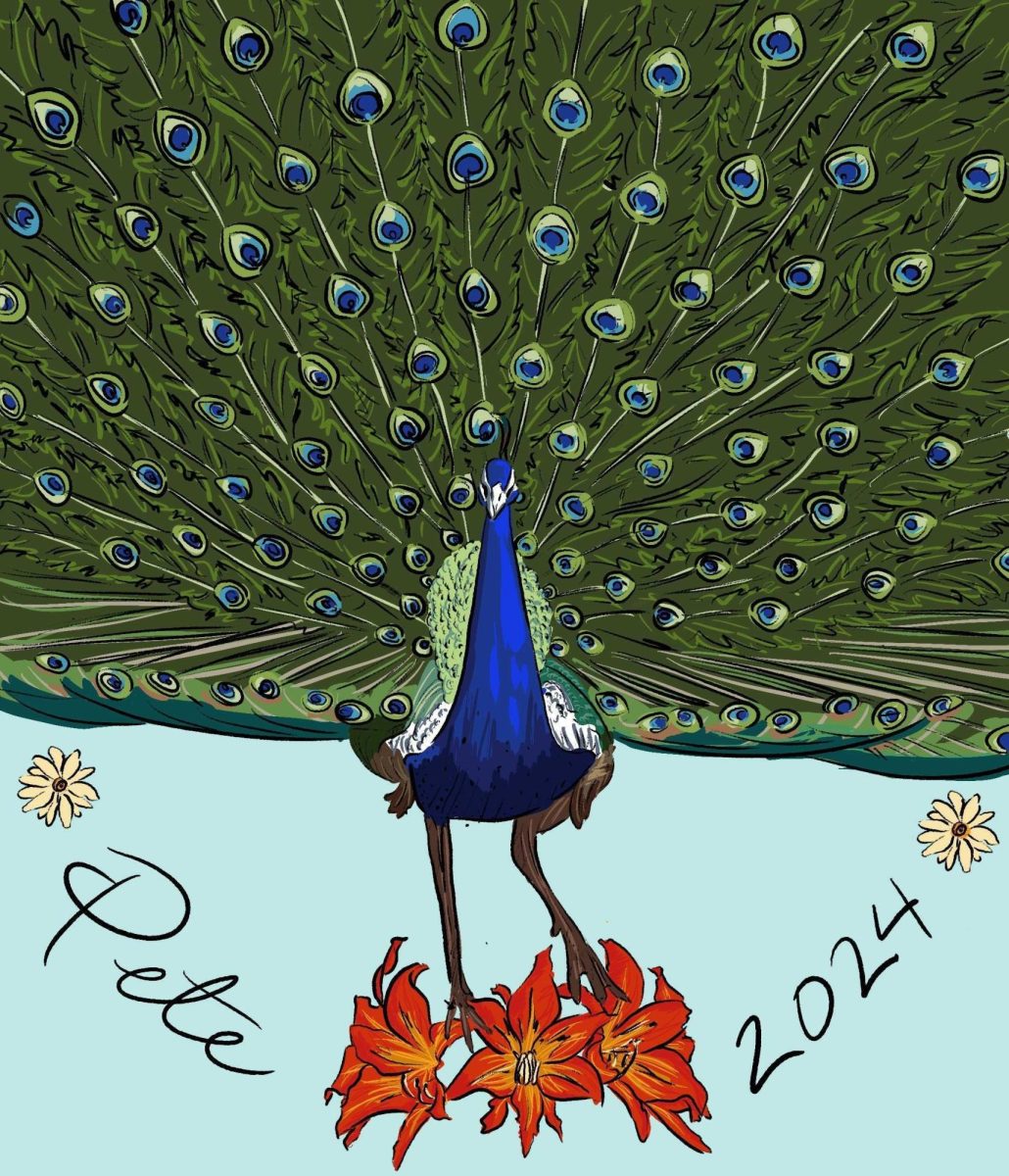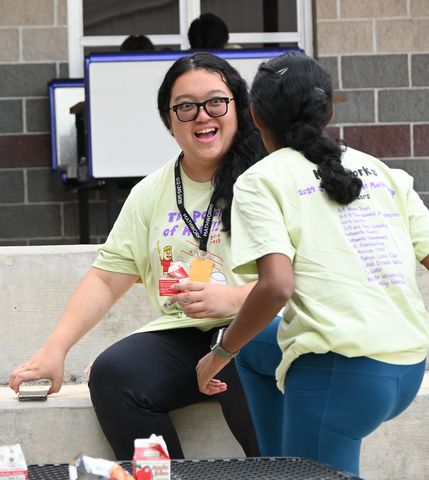Every October, the Honors College decorates an ofrenda with colorful butterflies, electric candles and paper marigolds, continuing its Día de los Muertos tradition and allowing students and faculty to spread culture across campus.
Michelle Sotolongo, Honors College academic adviser, sets up an ofrenda, or altar, each year. This year, the ofrenda dedicates itself to the 19 children and two teachers who were killed in the Uvalde shooting in May.
“I think the ones that are like the most impactful and also, maybe some that our students and campus community can relate to maybe a little bit more easily or recognize,” Sotolongo said.
Día de los Muertos, or Day of the Dead, is a Mexican holiday from Oct. 31 to Nov. 2 during which families celebrate the lives of their deceased relatives and loved ones.
Ofrendas are set up by families who celebrate Día de los Muertos to guide their deceased loved ones to the celebration of their life. On the altars sit photos of the deceased along with their favorite items, food and toys for children.
Sotolongo said the Lampasas ofrenda did not have a theme until two years ago. She found that the themes reminded students, faculty and staff that they are all connected. Last year, the ofrenda was dedicated to the Indigenous children whose remains were discovered in British Columbia, Canada. The year before, it honored Black and brown lives lost to police violence.
Sotolongo does not set up the ofrenda on her own. Edie Monceaux, a second-year graduate assistant at the Honors College, printed out the pictures of the Uvalde victims and helped student coordinators organize them on the ofrenda. While there were no strict guidelines on setting up the decorations, Monceaux loves how the ofrenda came out in the end to tell a story.
“I love how [the ofrenda] is displayed with all the Uvalde victims and students have put a few butterflies on the altar,” Monceaux said. “So, I’m just glad that it’s not only beautifully put together, but I’m glad that students feel, you know, comfortable and proud enough to represent their loved ones.”
Monceaux said student coordinators’ friends and family have stopped by the altar in previous years. Students have also been inspired by the Honor College’s ofrenda to make their own. Since it is Monceaux’s first year helping organize the ofrenda, she learned about the holiday and the meanings behind each decoration.
“I learned a lot about this tradition, this holiday, what it means,” Monceaux said. “I just learned a lot about — I just keep saying culture — but I feel I’m just happy to learn about another culture other than my own and really embrace it, and you know, just I was glad to be invited to partake in it.”
Ofrendas are is decorated with marigolds and candles to guide the dead to the altar. Skulls are decorated to represent the cycle of life, monarch butterflies are believed to hold the spirits of the dead and the papel picado, traditional decorated paper, is used to symbolize wind. Together, all the decorations incorporate the four elements; water, wind, earth and fire.
The Texas State tradition of setting up ofrendas began in 2006 when Sotolongo, then an honors college student, and a friend noticed that there were not many events related to Día de los Muertos on the Texas State campus. They set up an ofrenda and, over time, they saw the ofrenda got people interested in the holiday.
“It was, you know, something that we realized we had to educate more people on, like, what it was about,” Sotolongo said. “It’s a tradition; it’s not a Mexican Halloween. You know, we’re not focusing on, like, the scary aspects or anything like that. It’s more welcoming and inviting to remember the joyous moments of life and the loved ones that we’ve lost.”
The ofrendas continued to be put up each year, even after Sotolongo graduated from Texas State in 2007, later returning as an adviser. She has also gotten other organizations to set up ofrendas around campus over the years, such as the Center for the Study of the Southwest in Brazos Hall and Inclusive Excellence at the LBJ Student Center.
Sylvia Gonzales, the assistant director for Community Partnerships at Alkek Library, worked with Sotolongo a few years ago when she served as the Director of the Title III and V HSI Grants. She noticed how Sotolongo had set up an ofrenda each year and wanted their departments to work together to provide an opportunity for others to learn more about the Hispanic and Latinx cultures.
Together with other members of Gonzales’ department, they developed ways they could give more people the same opportunity.
“We have a monthly newsletter that we would send out to our department,” Gonzales said. “We would invite people across campus to set up an altar or an ofrenda and then just send us pictures. And then what we did was created, like, a map that shows students, you know, ‘hey, this is where you can go visit an ofrenda across campus’ if they wanted to go, you know, visit all of them on campus.”
Gonzales saw the number of responses increase during her tenure, from nine the first year to about 19 last year. The newsletter is not in production this year due to limited capacity.
What remains is a virtual altar to showcase on the Inclusive Excellence webpage. Anyone with a Texas State email can submit the name and photo of a loved one on a form. The deadline was Oct. 28, and submissions will be streamed live on the page on Nov. 1.
With Texas State’s growing population of Hispanic and Latinx students, Gonzales feels it is crucial to inform and educate others about their history and culture.
“I think it really just takes that commitment to being inclusive and inviting everybody to have the opportunity to do something like this and participate in this,” Gonzales said. “We find that a lot of people wanted to do it. “They just weren’t aware that they could.”
To learn more about Día de los Muertos and related events, visit https://inclusion.txst.edu/students/programs/cultural-celebrations/diadelosmuertos.html.
Honors College spreads Día de los Muertos spirit across campus
November 1, 2022
Donate to The University Star
Your donation will support the student journalists of Texas State University. Your contribution will allow us to purchase equipment and cover our annual website hosting costs.











